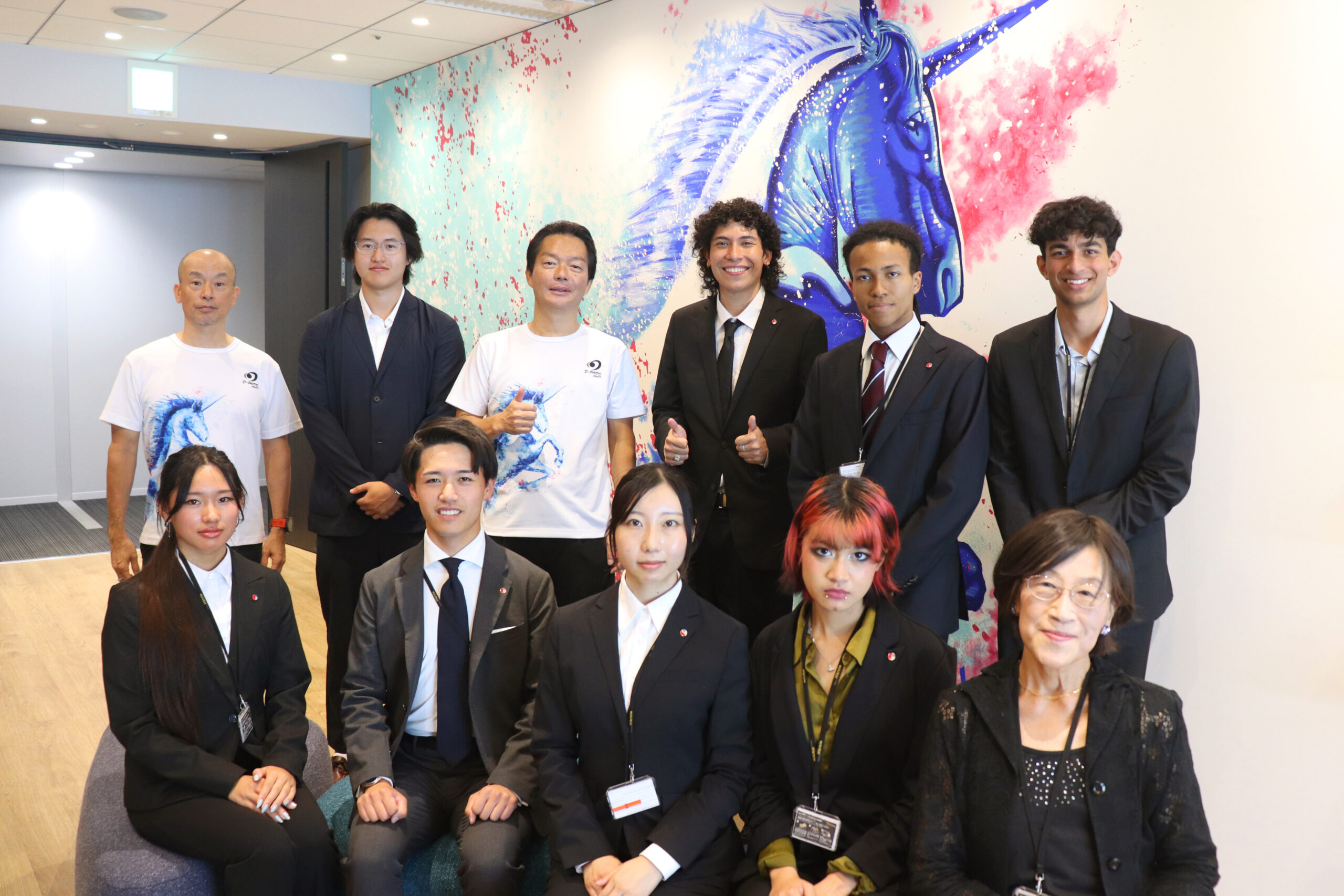
D-POPS GROUP is a collective of companies that integrates actual businesses and technology together, a concept that we denote as “Real Business x Technology x Group Synergy”, aiming to realize a Venture Ecosystem that will continue to be indispensable to society even 100 years from now. This article will focus on ‘inventory turnover’, a concept which is crucial to the “Real Business” part of our vision.
When we say “Real Business”, it encompasses a wide variety of companies. However, since this discussion is about inventory turnover specifically, we will focus our explanation on the retail industry, a sector within “Real Business” that holds inventory by necessity.
1. A Key Metric for Retail Management
There are many important metrics in retail management: net sales, profit margin, number of items sold, average selling price, and so on. Among these, what is the single metric that retail managers should focus on the most? The answer is arguably inventory turnover. Why? Let’s dive into a deeper explanation.
2. What is “Inventory Turnover”?
First of all, inventory turnover is an indicator used to judge whether a company’s inventory level is at an appropriate level relative to its sales. While there are limits, a higher turnover rate is generally considered better. It is typically calculated by dividing annual proceeds by the monetary value of inventory at the end of the fiscal year.
For example:
- A company with ¥600 billion in annual sales and ¥200 billion in inventory has a turnover rate of 3 times/year.
- A company with ¥40 billion in annual sales and ¥2 billion in inventory has a turnover rate of 20 times/year.
While it can vary depending on the specific retail sector, the standard turnover rate is generally considered to be 12 times/year or more. (In other words, the company’s monthly sales can cover the cost of its inventory).
3. Why is Inventory Turnover Important?
Let’s use the following examples to illustrate the importance of inventory turnover.
It’s difficult and confusing to compare companies that deal with different products or operate in different industries. Therefore, we will use home electronics retailers that sell similar products and have comparable sales volume as a model case for easy comparison. (These model companies are fictional but based on the numbers of actual businesses.)
| Model Company: | Retailer A | Retailer B |
| Number of Stores: | 550 | 24 |
| Number of Employees: | 16,000 (including 8,500 part-time) | 5,000 |
| Net Sales: | ¥730 billion | ¥750 billion |
| Gross Profit: | ¥208 billion | ¥225 billion |
| Profit Margin: | 28.5% | 30% |
| Ordinary Income: | ¥35 billion | ¥55 billion |
| Ordinary Income Margin: | 4.8% | 7.3% |
| Inventory Value: | ¥160 billion | ¥38 billion |
| Inventory Turnover: | 4.6 times/year | 18 times/year |
Retailers A and B are both highly successful companies, ranked first and second place in the home electronics industry based on profitability. A is a suburban-focused retailer, and B is an urban-focused one; a major difference lies in the number of stores due to their distinct location strategies. However, the most significant point of difference you should note is the inventory value and the resulting inventory turnover rate.
Both companies have sales of over ¥700 billion. Yet, to generate that ¥700 billion in sales, Retailer A keeps ¥160 billion in inventory, while Retailer B is only holding onto ¥38 billion. The difference in inventory value is a staggering ¥122 billion. Simply put, you could consider that Company A is holding this difference in inventory, while Company B is holding it in cash. This four-fold difference in inventory turnover translates into a massive difference in cash flow.
For context, Retailer A’s market capitalization is about ¥260 billion. The difference in inventory value (¥122 billion) created by the disparity in inventory turnover with Company B is nearly half of A’s market cap, which highlights the immense size of this gap.
In the home electronics retail industry, which deals with similar products, the gross profit margin for companies, including A and B, is typically around 28–30%, showing a similar standard across the board. This suggests that in industries with similar products and comparable sales volumes, a large difference in gross profit margin is hard to achieve.
Even in the comparison between A and B, the difference in Gross Profit Margin is about 1.5%, which is ¥10 billion/year. While this is a very significant number, the impact is less than a tenth of the ¥122 billion cash difference generated by inventory turnover (it would take roughly 12 years for the difference in gross profit to cover the cash flow difference from inventory turnover).
While we used home electronics retailers with similar sales and products as a clear example, inventory turnover is undoubtedly one of the most critical indicators for the retail industry, a sector where cash flow is front-loaded—companies must invest cash first to build stores, purchase inventory, and hire employees. This holds true not only for industries dealing with identical products, but also for sectors like apparel and manufacturing-retail (SPA), where product differentiation allows for larger differences in gross profit. After all, retail requires inventory, and there is no escaping that.
Achieving an inventory turnover rate significantly above the industry standard directly translates to a major competitive advantage in the marketplace.
4. How to Improve Inventory Turnover
Now that you understand the importance of inventory turnover, let’s discuss how to increase it. Does simply reducing inventory lead to higher turnover? Not exactly. If you simply cut inventory, you’ll run out of best-selling items, which will lower both sales and inventory. The turnover rate won’t necessarily increase. Worse, your store won’t end up carrying the items that customers want, potentially jeopardizing its survival.
While it’s certainly easier said than done, the improvement of inventory turnover comes down to the simple principle of stocking the right amount of best-selling products at the right time.
Companies with high inventory turnover, without exception, use technology to visualize inventory and sales numbers. Through automated processes, they can purchase the exact amount of best-selling products they need in a timely manner. They have also invested in their logistics network to minimize the lead time between a product selling in-store and the arrival of the next shipment.
The most crucial point is that a company educates employees not only on systems like technology and logistics, but also on the importance of inventory turnover rate for managing the entire company based on cash flow. Employees who understand that and have also been thoroughly trained in technology and logistics are able to run the operations effectively.
The product of People × Technology × Systems is the combination that drives improvement in inventory turnover.
5. Conclusion
This article discussed inventory turnover as a key element for the retail industry within our concept of “Real Business”. Many retail managers chase sales and gross profit margin. Of course, a business can’t survive without sales, and it’s difficult to run a sustainable business with a gross profit margin of only 1%.
Now, except for in extreme cases, the retail industry exists because customers purchase products. It is essential that customers can get the products they want whenever they want them, which requires companies to purchase products in advance and hold them as inventory. Optimizing this inventory can be quantified as inventory turnover, which leads to the maximization of cash flow and provides an enormous competitive edge unmatched by other metrics.
Inventory turnover is not talked about as often as sales or gross profit margin, but it really is the retail industry’s hidden platform.
Today, technology and systems are essential to make “Real Business” thrive. However, it is people who are using the technology and systems, and the final point of customer contact in “Real Business” is also with people. Ultimately, D-POPS GROUP believes that the way to make “Real Business” succeed is through the combination of People × Technology × Systems, maximizing the power of each individual.
Based on this philosophy, D-POPS GROUP aims to support startup companies that allow people to shine brightly and solve social issues by engaging in “Real Business”. We do this through investment and by realizing a group ecosystem based on the value of “Real Business”.
We hope that you enjoyed this article and look forward to working with you in the future.
D-POPS GROUP Advisor
Tetsuya Watanabe






